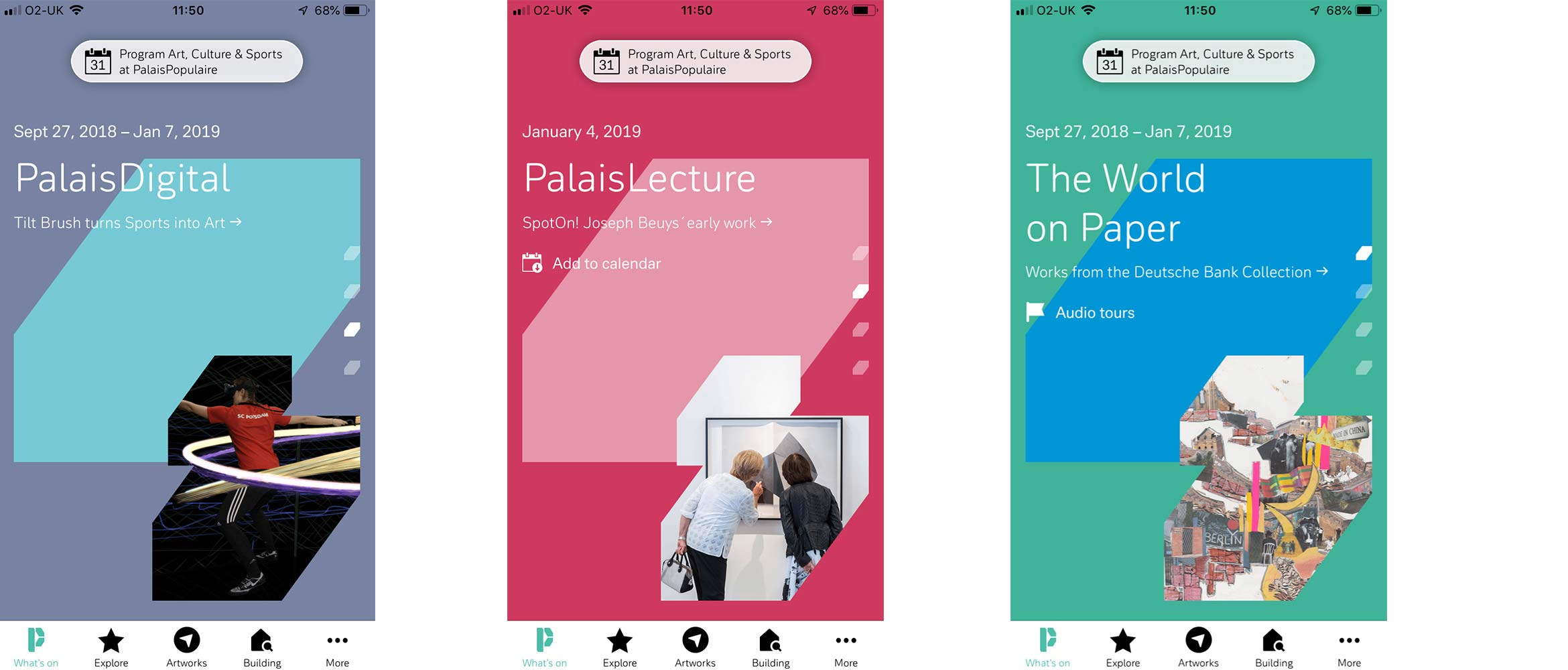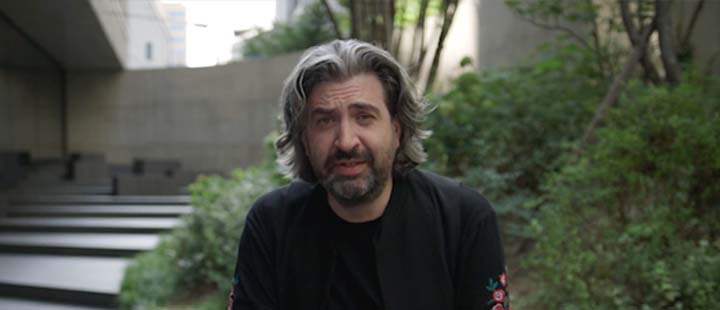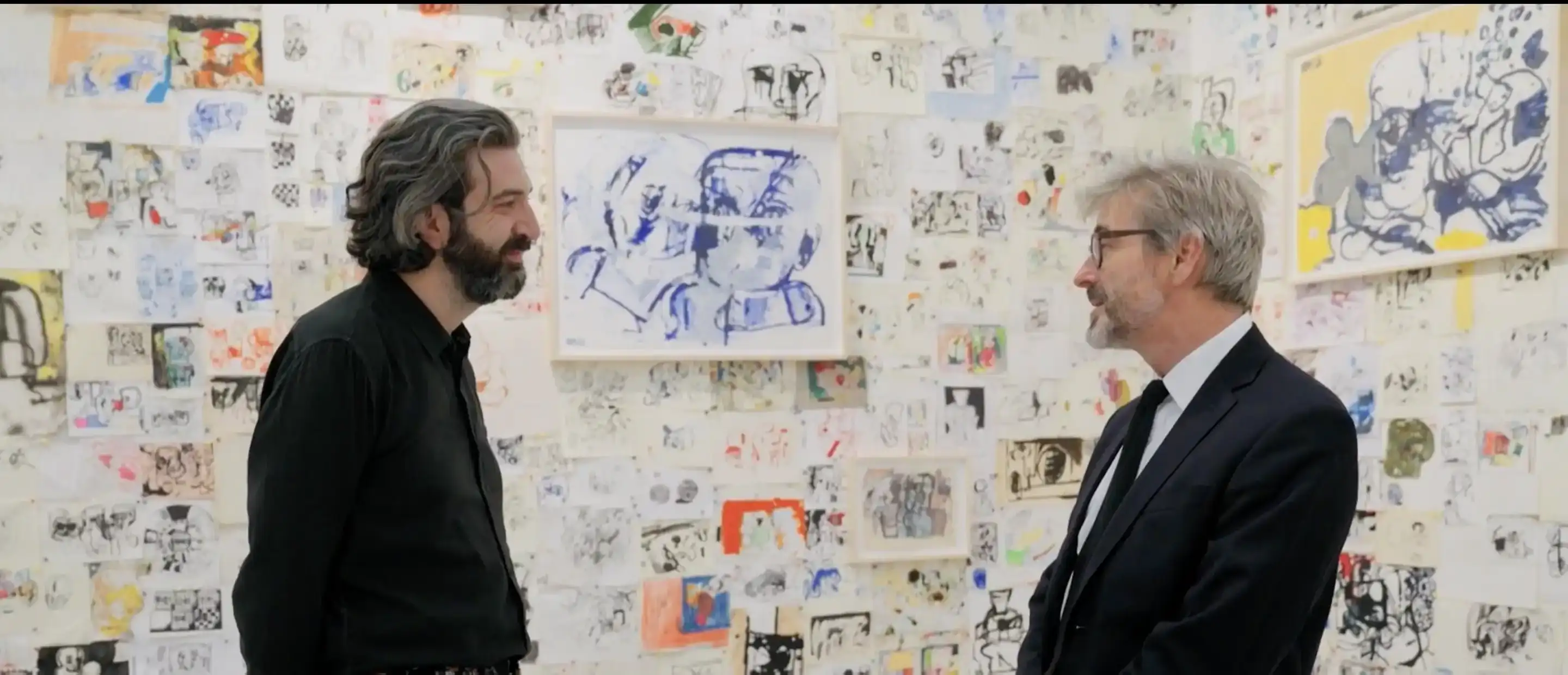Deutsche Bank has turned a former palace built for Prussian royalty into Berlin’s latest public attraction: a 3,000-square-meter gallery and event space.
On 27 September 2018, a major new cultural venue opened in central Berlin in the Prinzessinnenpalais, an 18th-Century neoclassical building well-known to the residents of the city. The PalaisPopulaire will be the permanent home of the Deutsche Bank art collection, and its opening was therefore a fitting start to Berlin Art Week, which counts Deutsche Bank as one of its partners. However, it will also be a forum in which the bank will share all of its many cultural and sporting activities with the public.
"We see ourselves as an open house that thrives on impulses from its visitors," says director Svenja von Reichenbach, who has been responsible for Deutsche Bank's Berlin exhibition activities since 1997, most recently as the director of the Deutsche Bank KunstHalle, the bank’s nearby gallery of global contemporary art, which closed in April 2018 and is now used by Deutsche Bank as office space. As well as forging links between the PalaisPopulaire and the city’s thriving cultural scene, she is creating an exhibition and event program designed to attract guests from all over the world.
The PalaisPopulaire is right at the heart of Germany’s capital, directly next to the State Opera House and Humboldt University. It is part of the internationally renowned Berlin cultural mile, along with the Museum Island, Humboldt Forum and the Deutsches Historische Museum (German Historical Museum).
“This will really provide the Deutsche Bank Collection with its own permanent public home."
Friedhelm Hütte, Global Head of Art, Deutsche Bank
Of its 3,000-square-meter floor space, 750 square metres is reserved for art – three times as much as the space available in the KunstHalle. "This will really provide the Deutsche Bank Collection with its own permanent public home," says Friedhelm Hütte, Global Head of Art at Deutsche Bank, who is responsible for the bank's worldwide art program and is the curator of the opening exhibition The World On Paper. With over 55,000 works of art on paper and in photographic form, Deutsche Bank has one of the most significant corporate collections of contemporary art in the world. "This will finally find a permanent home in the PalaisPopulaire to display all aspects of the collection. And we have more space for our cooperative projects with renowned cultural institutions," Hütte says.
A central meeting point for the cultural and art scenes
Alongside permanent exhibitions and temporary displays such as the Deutsche Bank Artist of the Year, Artist Talks will be held regularly. Artists will discuss their life and works in conversation with the editors of the art magazine Monopol. The first talks in October 2018 were with Iranian artist and activist Parastou Forouhar and Katharina Grosse, one of the most important German contemporary artists.
For the LesePalais series, the PalaisPopulaire, in cooperation with the Börsenverein des Deutschen Buchhandels (a trade assocation for booksellers in Germany) and the Deutsche Bank Foundation invites one nominee and the winner of the Deutscher Buchpreis (the German Book Prize) to a reading followed by discussion.
The PalaisTalk series is intended to reach an even broader public audience: host Andrea Thilo holds conversations with remarkable personalities such as extreme mountain climber Stefan Glowacz, actor Benno Fürmann and human-rights activist and writer Waris Dirie, whose talk was about the anniversary edition of her bestseller Desert Flower, the fight against taboos and the struggle for women's rights.
Experiments at the PalaisPopulaire with a piece of software called Tiltbrush will also show how sport and art can come together. Under the title Moving Arts, athletes will be able to create a work of art that represents their sport. In the process, energy, movement and body control are transformed into abstract lines – and into virtual sculptures that can be experienced in a digital gallery. The first to take part is discus thrower and U23 European champion Kristin Pudenz.
The educational program is equally energetic. Alongside audioguides in the PalaisPopulaire app for mobile devices, there will be guided tours and workshops for all ages and interests. And nearby, young people can try out parkour – the use of urban architecture to perform acrobatic running – on a specially designed course.
A building with a glamorous history
Parkour, art and high literature: the Prinzessinnenpalais seems made for this exciting mixture. After all, the building itself is a place full of contrasts. Built in the early 18th Century and destroyed in World War II, it was rebuilt by GDR architect Richard Paulick in the 1960s, with reinforced concrete behind a baroque façade.
The architectural firm responsible for the refurbishment, Kuehn Malvezzi, specializes in museum construction and was keen to emphasise these contrasts. Today, the historic shell houses large bright spaces with a contemporary feel. The clear lines of the structural framework with its exposed concrete pillars form a calm neutral background for the artworks on display. The central point of the exhibition space is the rotunda, which features a round staircase with a historic rococo landing from the former Burg Castle.
Thanks to augmented reality and PalaisPopulaire TimeMachine, another app that you can download onto selected mobile devices and use during your visit, you can watch as the widow of Emperor Friedrich III walks through the palace. Meanwhile, the museum café LePopulaire will take you to yet another place in time. The legendary Königin-Luise-Torte (Queen Louise Tart) is on the menu as a reminder of the Opera Café that was housed in the Prinzessinnenpalais until 2012. Naturally, it is also accompanied by modern fusion cuisine.
And yet another in-house tradition is still being maintained at the PalaisPopulaire: the legendary disco nights in the Opera Café from the GDR period. International DJs from different genres will play once per exhibition in ClubPopulaire with sets inspired by the exhibition. There will also be interventions and performances, and you can even dance around the artworks. This unlikely combination means that the PalaisPopulaire will be right at home in Berlin. It is a forum every bit as colourful and diverse as the city itself.
Sarah Elsing is a freelance cultural journalist in Berlin. Her work on art, architecture, literature and the zeitgeist has appeared in Frankfurter Allgemeine Zeitung, Monopoly and Die Zeit. For Deutschlandfunk Kultur she works as a writer and editor for the programs Lesart and Conclusion. She has also written for the Germany edition of WERTE, the client magazine of Deutsche Bank Wealth Management.










